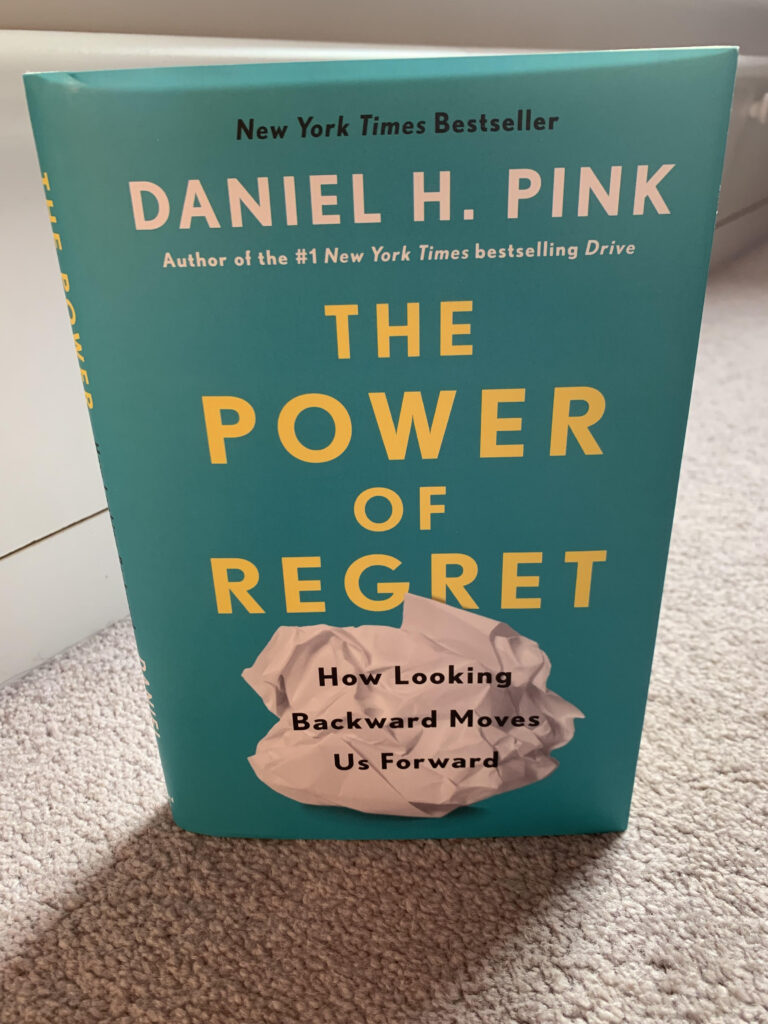
Hi everyone! I hope your summer (or whatever season you’re in right now) is going well. Currently, I’m melting from the heat but excited to share some thoughts on this book!
My next post is on a good one by psychologist, Daniel H. Pink. He wrote about a subject that everyone can, and according to him, should relate to: Regret.
More often than not we hear about people having no regrets. Pink, however, completely rejects this philosophy and argues that regret is an essential part of the human experience. Throughout The Power of Regret: How Looking Backward Moves Us Forward, he explains why, citing all different studies as well as direct examples. Many of these examples are from the World Regret Survey.
A main takeaway he wants readers to have, is rather than viewing regret as something that holds you back, you can benefit from it through careful reflection. For instance, one woman named “Abby” who Pink included in the book regrets avoiding her grandparents’ attempts at bonding with her when she was young. She didn’t/doesn’t want this to be a pattern and began compiling stories from her father for her children. A lesson was learned through reflecting on these missed opportunities, which resulted in Abby taking productive action.
The idea of missed opportunities deeply resonates with me as I was/am frequently too hesitant to take the leap. There have been many activities, events, etc. I wish I had participated in but never did. I just felt afraid of the outcome and what other people’s opinions were. I’m still trying to care less about them.
Overall, I would say that this self-help novel in particular has had a very significant impact on me. Being someone who does reflect but also needs to overcome my fears in this regard, Pink’s The Power of Regret: How Looking Backward Moves Us Forward definitely served as a reminder and major eye-opener. To all readers: I (needless to say) highly recommend it.



































